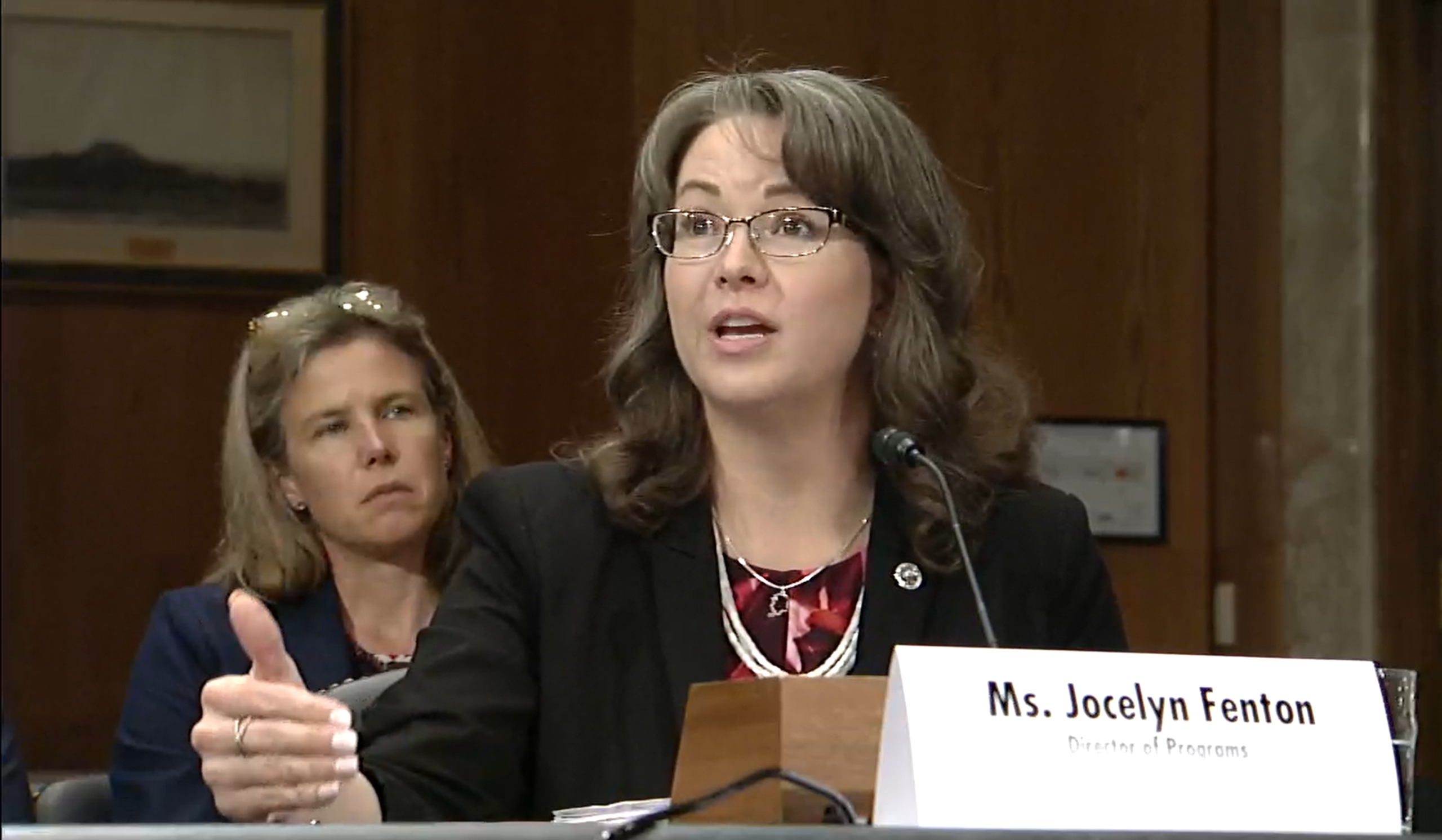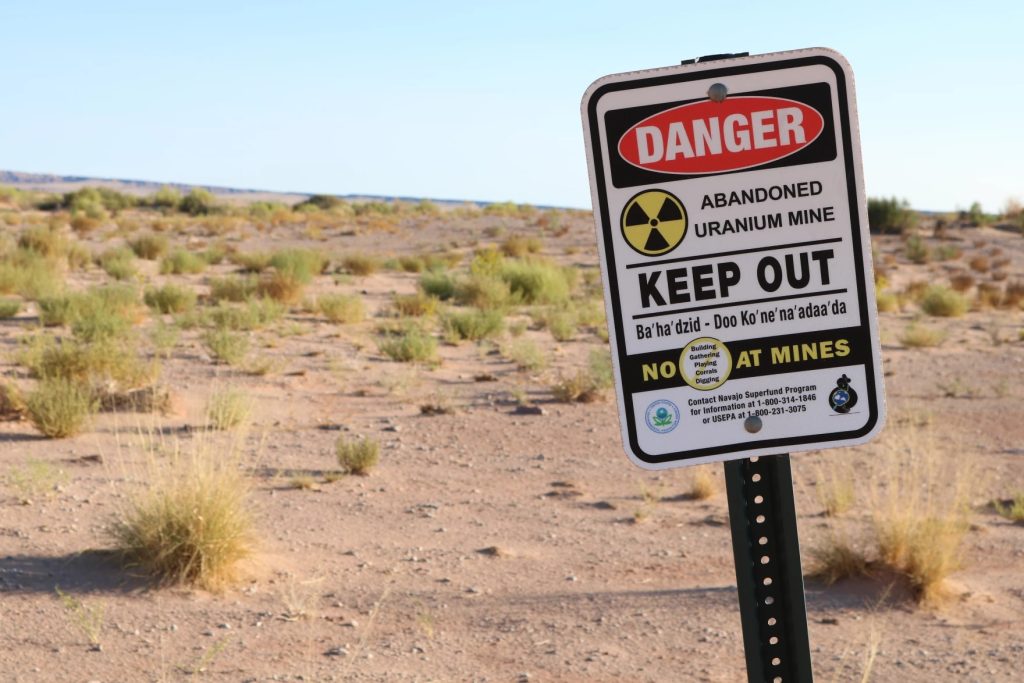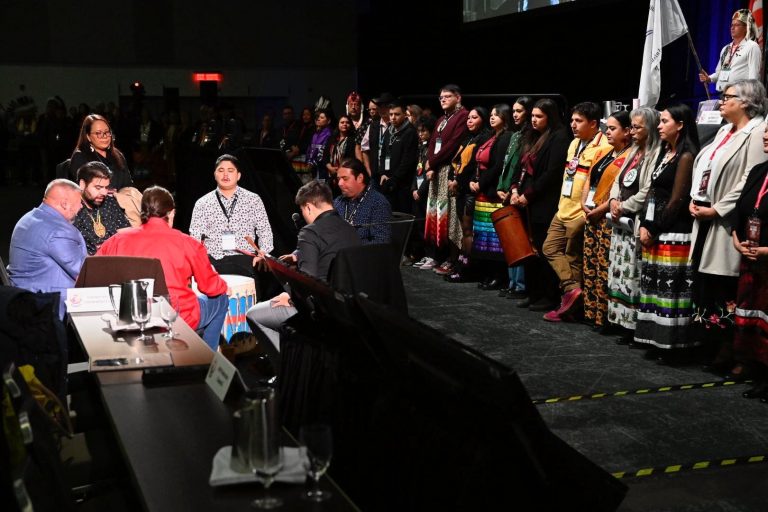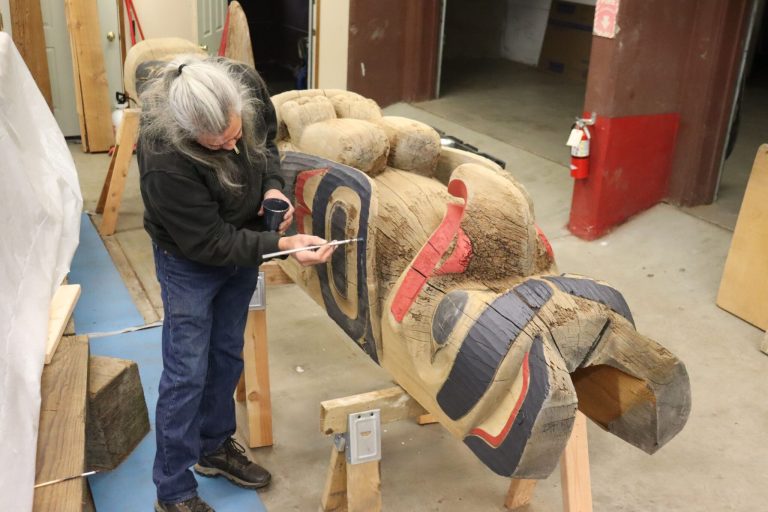Podcast: Play in new window | Download | Embed
The Radiation Exposure Compensation Act (RECA) was recently renewed.
It provides compensation for uranium miners and people exposed to Cold War-era nuclear testing.
In what could be a final round of applications, allegations of predatory representation and solicitation are on the rise, targeting tribal communities, as KJZZ’s Gabriel Pietrorazio reports.
President Donald Trump signed the RECA renewal on July 4 as part of his sweeping One Big Beautiful Bill Act.
Immediately, Loretta Anderson noticed a problem.
“By the (July) 5, I started getting these calls.”
She’s a tribal member from the Laguna Pueblo in New Mexico and says some attorneys and companies see RECA as an opportunity to cash in.
“They’re not only going door-to-door, but they’re also having meetings almost every week.”

Navajo miners, part of the Utco Uranium Corporation, pose near Cameron, Ariz. in 1956. (Courtesy Fronske Studio / Cline Library at Northern Arizona University)
This year marks eight decades since the U.S. detonated its first atomic bomb at the Trinity Test Site in the New Mexico desert.
Yet until now, no one in the Land of Enchantment could have ever filed a downwinder claim.
“They mined them, made billions of dollars off the uranium, and when it was all said and done – they just left – left our people sick, suffering, and dying.”
More than $2.6 billion have been already paid out for 42,000 claims since 1990.
Members from 24 tribes account for at least 5,300 of those claims, most of which are linked to the Navajo Nation.
Depending on their occupation or condition, claimants are eligible for up to $100,000. And that leads Anderson to worry about those very victims also falling prey to opportunistic third parties.
“They’re all coming out of the woodworks again, this angers me.”
 Renewable energy provides a sizable share of power in some rural Alaska communities, but these are tough times to seek federal funding for wind and solar, as Alaska Public Media’s Liz Ruskin reports.
Renewable energy provides a sizable share of power in some rural Alaska communities, but these are tough times to seek federal funding for wind and solar, as Alaska Public Media’s Liz Ruskin reports.
Denali Commission programs director Jocelyn Fenton recently testified to a U.S. Senate Committee about the energy needs in rural Alaska. She emphasized fossil fuel.
“Life in these villages depends on a fragile but vital infrastructure system: small diesel powerhouses, bulk fuel tank farms, and water treatment systems.”
President Trump has paused or defunded renewable energy projects across the country.
His 2026 budget would reduce funding for the Office of Indian Energy while disallowing any of it for wind, solar, or battery projects.
The hearing in the Senate Indian Affairs Committee was entitled “Unleashing Indian Energy.”
That’s a twist on Trump’s executive orders that call for unleashing American and Alaska’s energy, but for participants in the hearing, the nuanced message is that renewables should be unleashed, too.
U.S. Sen. Lisa Murkowski (R-AK), who chairs the committee, says government programs should not favor one energy source over another.
“The projects that we can get online quickest and, quite honestly, cheapest right now are wind and solar, and we do have several of these that are in that pause category, along with some battery storage.“
The top Democrat on the Senate Indian Affairs Committee, U.S. Sen. Brian Schatz (D-HI), said his information is that the Office of Indian Energy is sitting on about $30 million — nearly half of the funds Congress appropriated for this fiscal year.
The year ends in a few weeks, though some funds can be held over from one budget cycle to the next.
The acting head of the office, David Conrad, said he’s not discriminating against renewables with that money, just waiting for word from higher-ups in the administration that he has approval to spend it.
Get National Native News delivered to your inbox daily. Sign up for our daily newsletter today.



